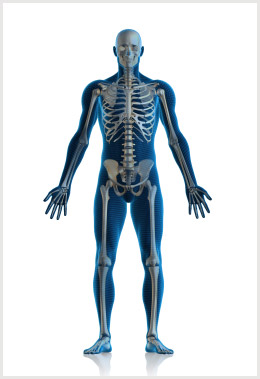How alcohol affects the body
 The Route of Alcohol through the Body
The Route of Alcohol through the Body
Alcohol travels through the body from the mouth, to the stomach, into the circulatory system, the brain, kidneys, lungs, and liver. As alcohol is consumed and absorbed, the following may occur:
Mouth
- Alcohol passes over sensitive membranes which may become irritated if the alcohol content is high enough
- Heavy drinkers run a much higher risk of mouth and throat cancer
Stomach
- Alcohol does not have to be digested as its molecule is very small and can easily pass through the stomach lining
- When the stomach is empty, alcohol passes directly into the bloodstream
- When the stomach has food in it, particularly food high in protein, the rate of alcohol absorption is slowed but not stopped
- Carbonation in beverages that may be mixed with alcohol speeds up alcohol absorption
- Alcohol in small amounts stimulates the appetite because of an increase in the flow of stomach juices
- Because of the large amounts of stomach juices produced, greater amounts of alcohol dull the appetite and can cause malnutrition
- Excessive alcohol consumption stimulates the flow of gastric juices in the stomach and when combined with the high alcohol content causes irritation to the lining of the stomach resulting in ulcers
- When the concentration of alcohol and gastric juices becomes high enough and irritation to the lining is increased, the reflex action of vomiting is triggered as the body's way of relieving some of this irritation
- 20% of alcohol consumed is absorbed into the bloodstream through the stomach and 80% (the remaining alcohol) is absorbed into the bloodstream from the small intestine
Circulatory system
- Once in the bloodstream, alcohol is quickly distributed evenly throughout the body
-
Alcohol dilates or widens the blood vessels as it enters the bloodstream causing:
- greater flow of blood to the skin surface (blushing)
- temporary feeling of warmth
- increased heat loss and rapid body temperature decrease
- drop in blood pressure
Brain
- When alcohol reaches the brain it immediately affects the brain's ability to control behavior and body functions
- As the concentration of alcohol in the bloodstream (BAC levels) increases, the body's functions and behaviors change
-
At specific BAC levels the effects are:
- BAC .02% Judgment, inhibitions, and emotions begin to be affected and results are increased relaxation and excessive talking
- BAC .06% Reaction time is decreased, coordination is affected, but neither may be very obvious
- BAC .10% Vision, speech, balance, perception and self control are affected
- BAC .18% Walking and standing are noticeably affected. (walking a straight line, buttoning a coat)
- BAC .20% Memory is impaired, the brain centers for intelligence, emotions and sensory motor abilities are affected; cannot think clearly and become excited or angered easily
- BAC .30% The body is thrown into a complete state of confusion and the signs are: slurred speech, double vision, hearing impairment, difficult or impossible to judge distances, no longer able to walk normally and sudden mood changes
- BAC .40% The brain can barely function and the nervous system is ineffective ; the person is unconscious or almost unconscious; the body may seem frozen or barely able to move, vomiting or uncontrolled urination may occur
- BAC .50% A person slips into a coma; breathing, heart action and blood pressure are decreased drastically to a dangerously low point; the brain cannot control body temperature; death can and often does occur
More info on effects of alcohol on brain.
Kidneys
- Alcohol acts as a diuretic which means it increases urine formation
- A person will urinate more frequently causing dehydration and thirst
Lungs
- Alcohol in its gaseous state, can be inhaled into the lungs and from there will go rapidly into the bloodstream
- Five percent of the alcohol taken into the body leaves through the lungs, kidneys, and the skin; the rest is removed by the liver
Liver
-
Ninety-five percent of alcohol that is put into the body leaves the body when it is oxidized in the liver
- oxidation is the converting of alcohol into water and carbon dioxide
- the liver can only oxidize about one drink per hour. (This is the reason that only time can sober up a person.)
-
Alcohol damages the liver when it is consumed on a regular basis. Damage that occurs include:
-
Fatty Liver
- Alcohol interferes with the liver's ability to break down fats which collect in the liver
- When drinking stops, the condition is usually reversed
-
Cirrhosis of the liver
- Heavy alcohol use destroys normal liver tissue and it is replaced by scar tissue.
- Cirrhosis of the liver decreases blood flow and liver functioning
-
Progressive cirrhosis (scarring or hardening of liver)
-
Fatty Liver
Download diagram on alcohol and body (PDF)
Alcohol and health
- Alcohol in low doses reduces the risk of coronary heart disease, with 80% reduced risk at a consumption of two drinks per day (20g alcohol)
- Beyond two drinks per day the risk of heart disease increases, being more than the risk of an abstainer
- With heavy drinking, any potential benefits are outweighed by greater risks
Anderson, P. & Baumberg, B. (2006) Alcohol in Europe, A Public Health Perspective. A Report for the European Commission.














